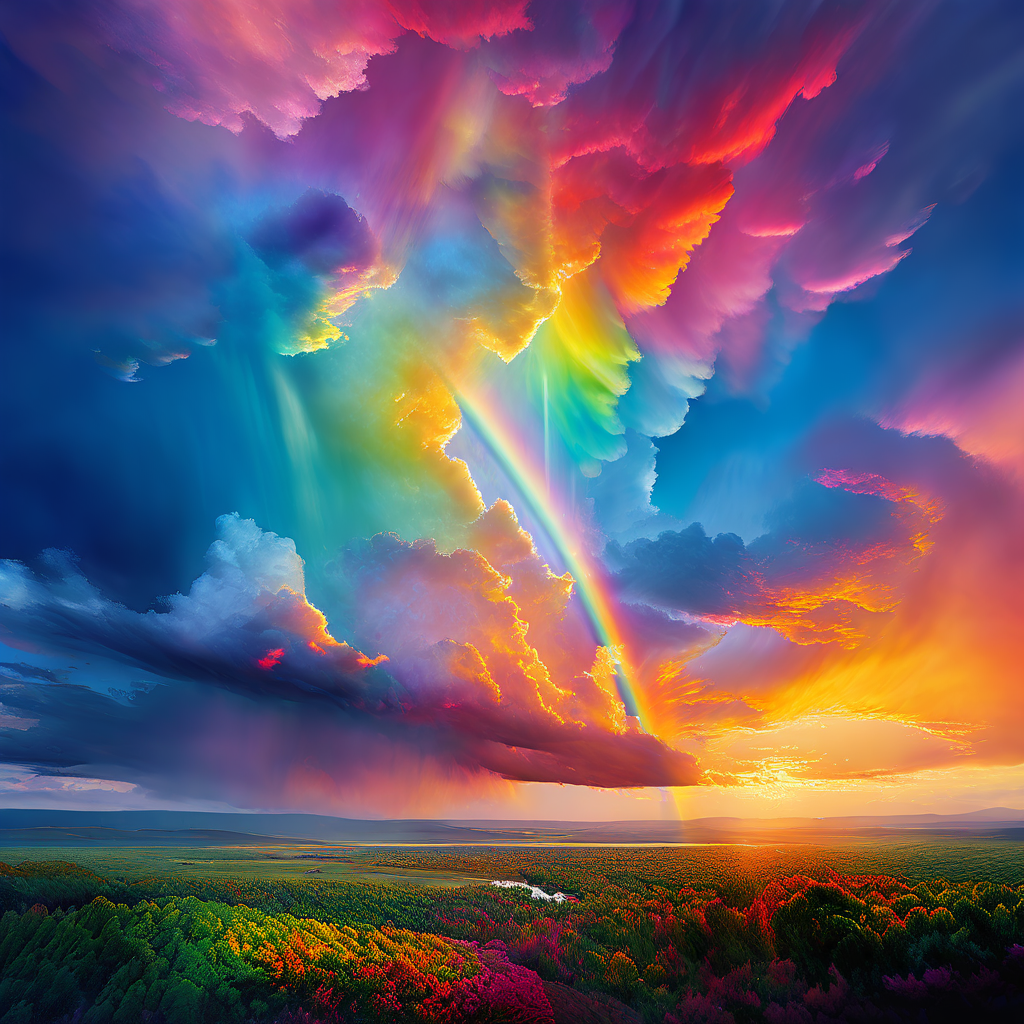How Chakras Became Associated with the Colors of the Rainbow
The association of chakras with the colors of the rainbow is a relatively modern development in the understanding of these ancient energy centers. While traditional texts and teachings on chakras in Hinduism and Buddhism did not originally include specific color associations, the modern color system has become a popular and influential way to visualize and work with chakras in contemporary spiritual and holistic practices. Here’s a look at how this colorful connection came about.
Historical Context
In ancient Indian traditions, chakras were primarily understood in terms of their location, qualities, and associated deities or symbols, rather than specific colors. Early references to chakras in the Vedas, Upanishads, and other classical texts focus on their spiritual and energetic significance, often using imagery and metaphor rather than precise color coding.
Influence of Western Esotericism
The color associations we recognize today began to emerge in the late 19th and early 20th centuries, influenced by Western esoteric traditions and the growing interest in Eastern spirituality. The Theosophical Society, founded by Helena Petrovna Blavatsky and others, played a significant role in introducing and popularizing concepts from Hinduism and Buddhism to the Western world. Theosophists and other early Western spiritual seekers began to integrate these concepts with their own ideas about energy, light, and color.
Charles W. Leadbeater
One of the key figures in this development was Charles W. Leadbeater, a prominent Theosophist who wrote extensively about chakras. In his 1927 book “The Chakras,” Leadbeater described each chakra as having a specific color, drawing on his clairvoyant observations and interpretations. His work, along with that of other Theosophists, laid the groundwork for the modern color associations of the chakras.
Modern Color System
The modern system of associating chakras with the colors of the rainbow—red, orange, yellow, green, blue, indigo, and violet—gained further traction in the 1970s and 1980s with the rise of the New Age movement. This movement embraced a holistic and eclectic approach to spirituality, blending elements from various traditions and emphasizing personal growth, healing, and energy work.
The rainbow color system aligns each of the seven major chakras with a corresponding color as follows:
- Root Chakra (Muladhara): Red
- Sacral Chakra (Svadhisthana): Orange
- Solar Plexus Chakra (Manipura): Yellow
- Heart Chakra (Anahata): Green
- Throat Chakra (Vishuddha): Blue
- Third Eye Chakra (Ajna): Indigo
- Crown Chakra (Sahasrara): Violet or White
This color scheme not only provides a visually appealing way to understand and work with the chakras but also leverages the psychological and energetic properties commonly attributed to each color.
Psychological and Energetic Resonance
The choice of colors for each chakra is not arbitrary; it is often based on the perceived qualities and effects of each color. For example:
- Red is associated with grounding, stability, and vitality, resonating with the Root Chakra’s focus on survival and security.
- Orange is linked to creativity, pleasure, and emotional expression, fitting the Sacral Chakra’s domain.
- Yellow symbolizes personal power, confidence, and intellect, aligning with the Solar Plexus Chakra.
- Green represents love, compassion, and healing, matching the Heart Chakra’s qualities.
- Blue signifies communication, expression, and truth, suitable for the Throat Chakra.
- Indigo is connected to intuition, wisdom, and inner vision, corresponding to the Third Eye Chakra.
- Violet or white is associated with spirituality, enlightenment, and connection to the divine, fitting the Crown Chakra.
Conclusion
The association of chakras with the colors of the rainbow is a modern synthesis that combines ancient spiritual wisdom with contemporary esoteric and psychological insights. While not rooted in the original teachings of Hinduism and Buddhism, this color system has become a powerful and accessible tool for visualizing and working with the chakras. It illustrates the dynamic and evolving nature of spiritual practice, reflecting how ancient concepts can be reinterpreted and integrated into modern contexts to enhance our understanding and experience of the subtle energies that shape our lives.

